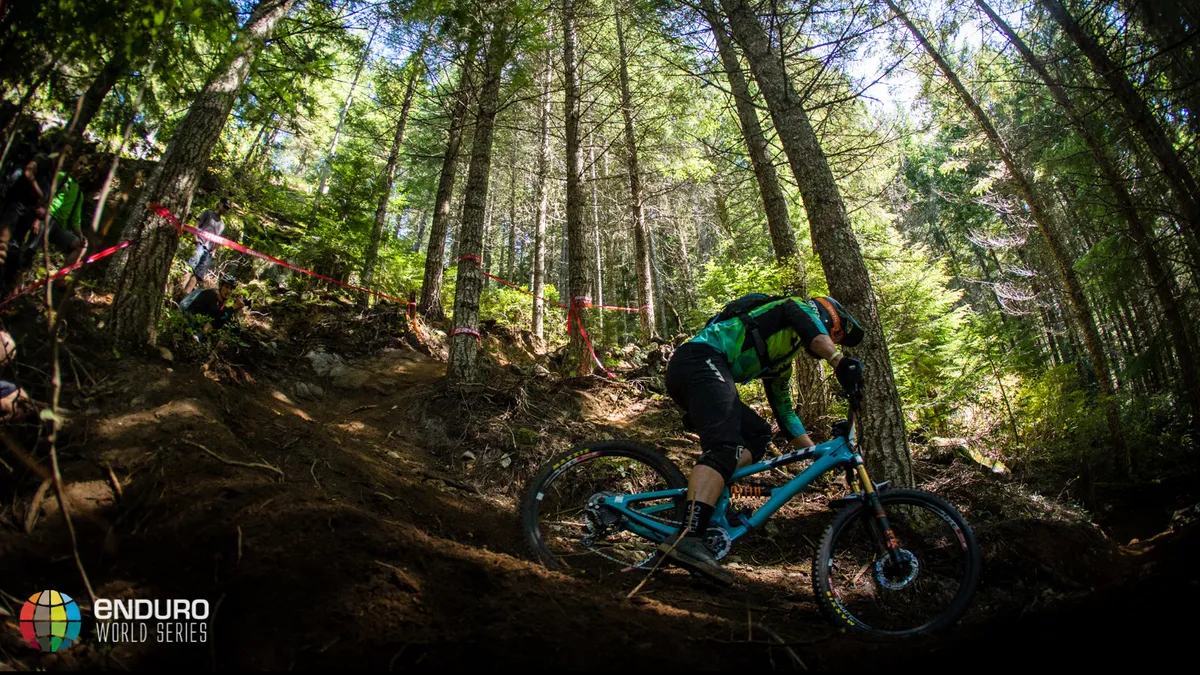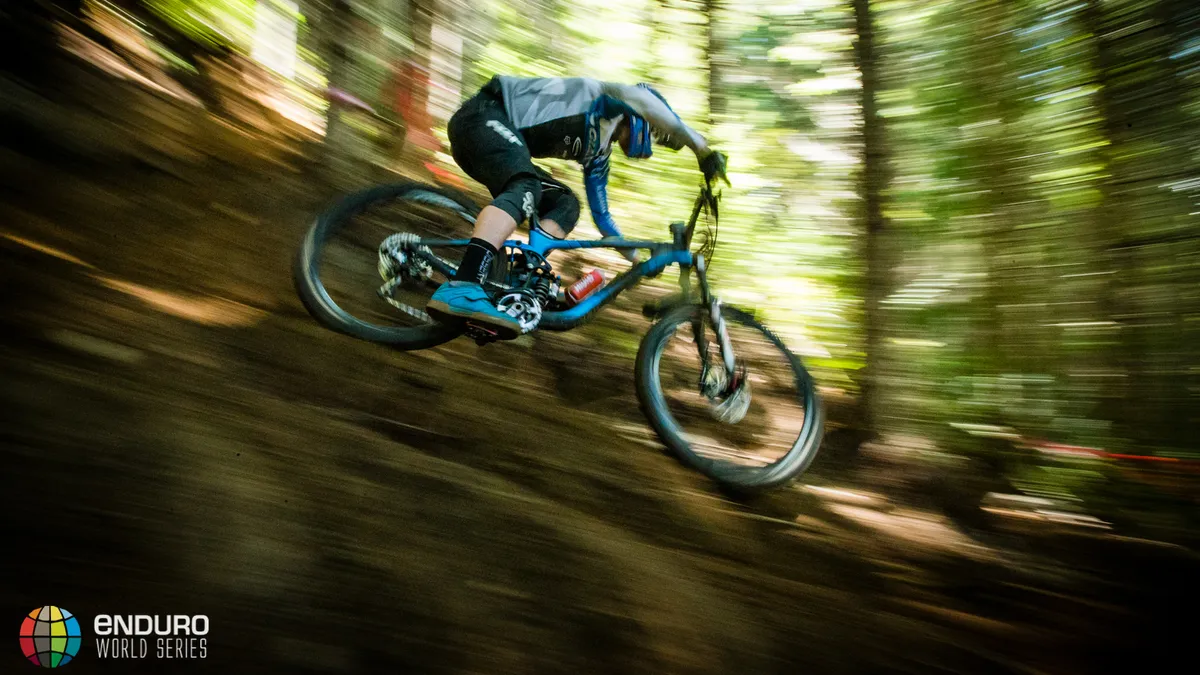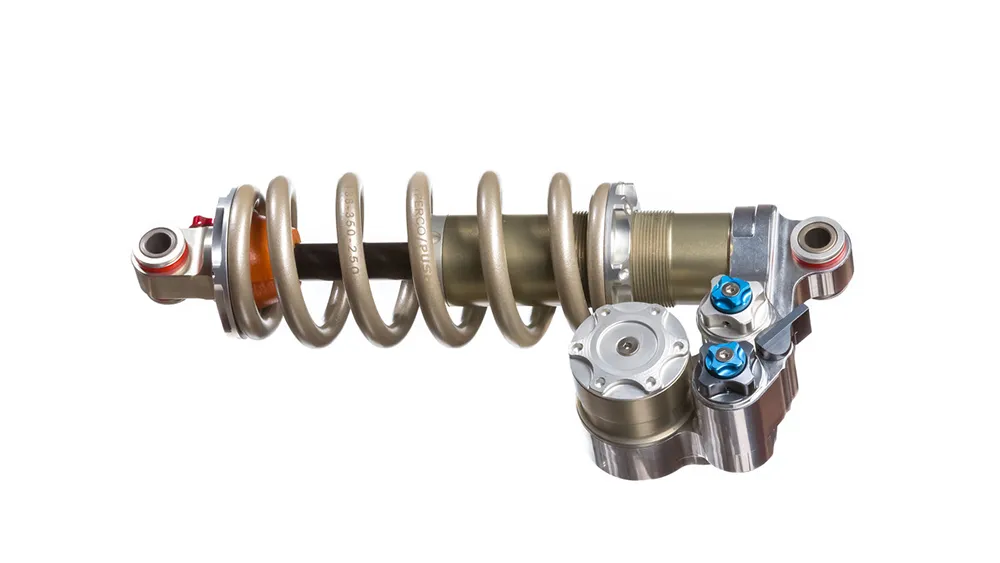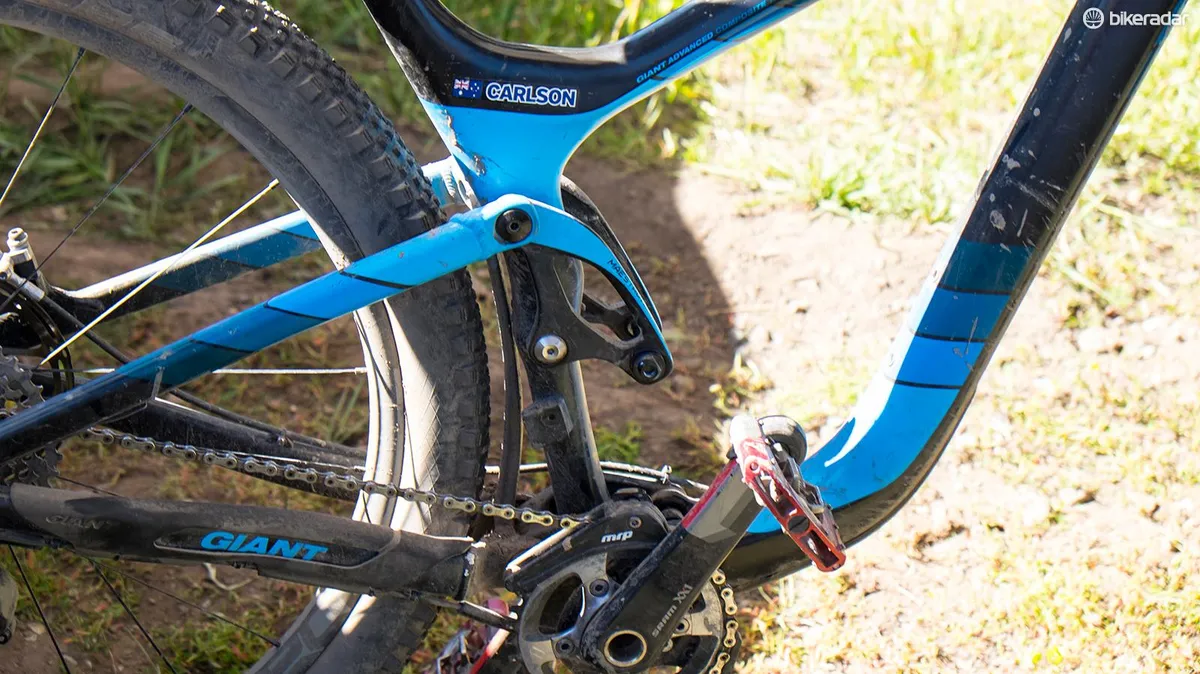When enduro racing burst on the scene several years ago there was an assumption that this new genre of racing would replicate the way many mountain bikers already rode, on the bikes they already owned. But like all competitive sports, as the races became more intense, the equipment became more specialized.
That’s not to say the average rider can’t benefit from the trickle down of these race-driven refinements. The fact that enduro racers are required to start and finish an event on the same frame, wheelset, fork and shock results in stronger, more reliable components for all of us. One key component that is making a comeback thanks to enduro racing is the coil shock.
Related: Five reasons you should race enduro
A few short years ago coil shocks were relegated to downhill and freeride bikes, and even then, many gravity racers would opt for lighter weight air shocks at times. But the punishment of enduro racing is creating a coil-sprung renaissance, as companies begin developing new coil shocks tailored to trail and all-mountain bikes.
Air vs coil
Air cans and metal springs are both effective ways of creating a mountain bike shock. Air shocks have coils whipped when it comes to weight. Air is, after all, much lighter than any steel or titanium spring will ever be. Coils, on the other hand, provide consistent, fade-free performance during extended descents.
“You simply can’t beat the performance that you get from a coil shock. As good as air spring technology is, you still have a highly pressurized air system, which means extra seals and friction. Air springs are also affected by heat, humidity, altitude and so on, which cause variances in performance," says PUSH Industries president Darren Murphy.
"The only negative to a coil shock is weight. With as capable as today’s long-travel bikes are, riders are willing to sacrifice weight for the performance and consistency you get from a coil.”

The Elevensix is the vanguard of a new generation of coil shocks developed for trail and all-mountain bikes
Murphy is, admittedly, a bit biased on this subject. Earlier this year his suspension tuning company launched its first shock, the Elevensix. This high-end coil-sprung shock offers riders two customizable independent compression circuits with a lever that allows the rider to quickly toggle between each setting. Many Elevensix riders have opted to use one setting for descending and another for climbing, which makes it perfect for enduro racing.
The pro’s choice
A growing number of professional enduro racers are turning to coil shocks.
Giant Factory Off-Road racer Josh Carlson is a firm proponent of coil shocks. So much so that his default setup is a RockShox Vivid RC2. The SRAM/RockShox sponsored-athlete will swap between a coil or an air shock depending on the course conditions.
“At every race I start with my base setting, which is a coil rear shock and baseline setting in my fork. Once we area able to walk or ride the courses, I will then make the call if switching to an air shock is necessary," says Carson.
"Situations that will make me consider an air shock are how much pedaling, especially climbing, is in the stage and just how rough the stages are. If a majority (more than 75 percent) of the stages are relatively smooth and have a lot of climbing, I will turn to my Monarch Plus DebonAir shock. Most of the time though, I will run my coil.”
In addition to Carlson, Trek Factory team rider Justin Leov has been experimenting with a one-off version of the Fox DHX2 for several races this season. Fox made Leov a special on-the-fly low-speed compression switch that allows him to firm up the suspension for climbs.
“It’s made a big difference in my riding," noted Leov.
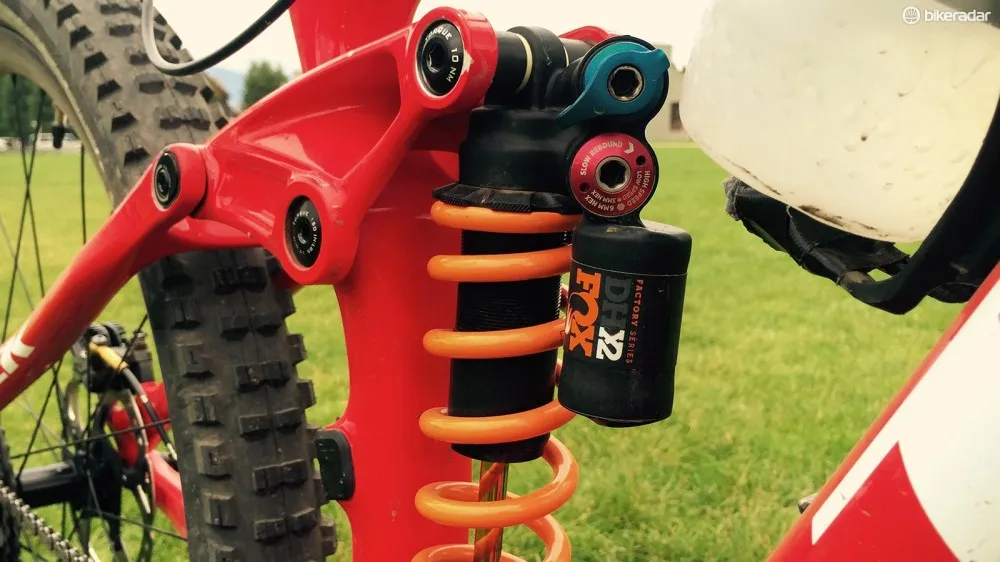
This easy-access switch allows Leov to firm up the shock during transition stages
Related: Justin Leov and Tracy Moseley’s Remedy 29ers
In fact, many racers swapped air cans for coils for the sixth round of this year’s Enduro World Series in Whistler, British Columbia. The technical, lift-assisted course was ideal for coils.

Carlson’s teammate Yoann Barelli ran a RockShox Vivid RC2

Leov’s teammate and women’s overall leader Tracy Moseley swapped out her Fox Float X for a DHX2
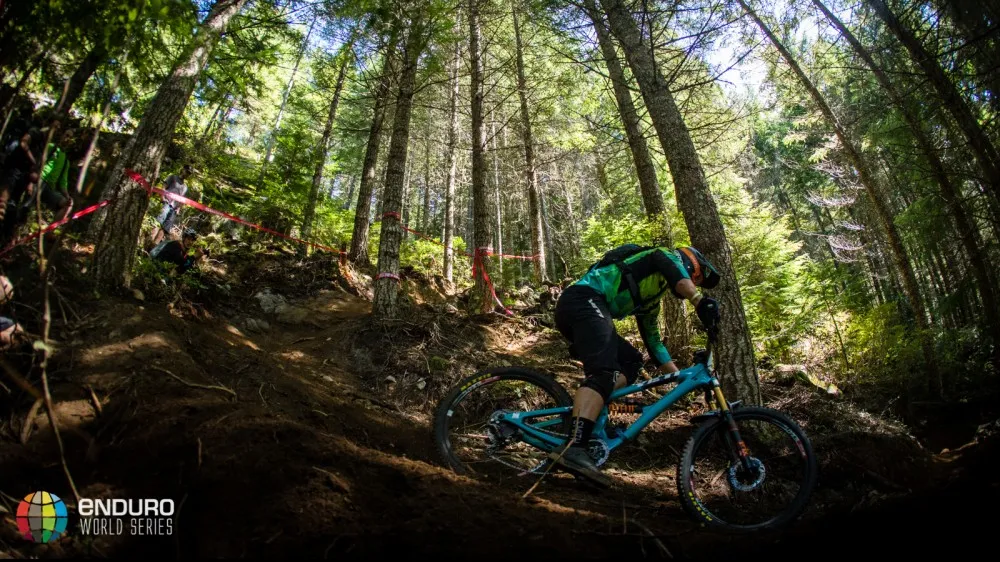
Men’s race winner Richie Rude also stormed the course on his SB6c equipped with a DHX2
Is a coil shock right for you?
Just because many of the pros are doing it doesn't necessarily mean you should swap out your air shock for a coil.
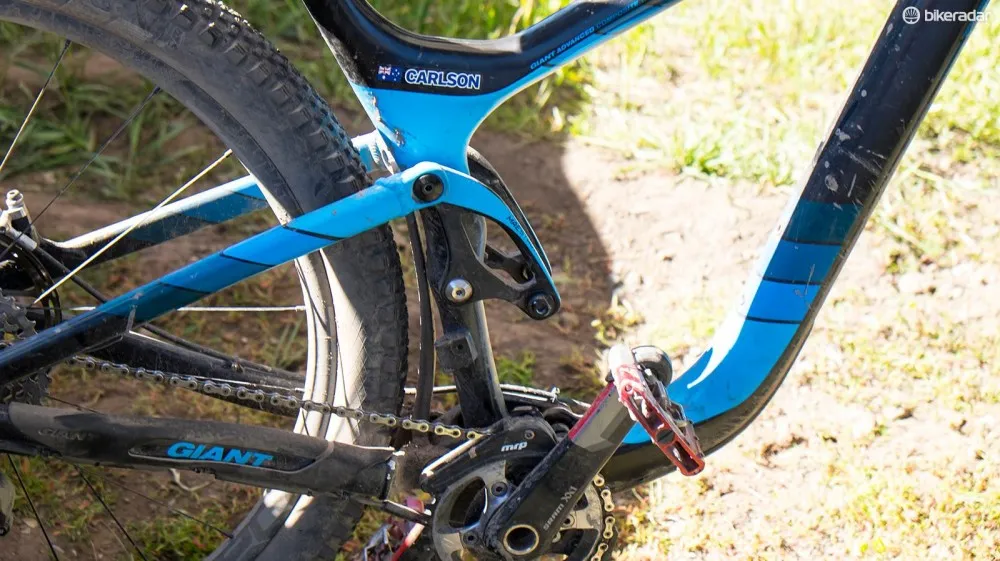
Carefully consider the particulars of your bike's suspension design before swapping to a coil. When in doubt, consult the manufacturer
For one thing, not every suspension design is compatible with coil shocks. Your bike’s suspension rate is a critical factor in deciding if you can run a coil shock. Suspension rates generally fall into one of three categories: rising rate, flat, or falling rates.
In layman’s terms, a rising rate refers to a suspension design that becomes harder to compress (firmer) as it moves further into its travel. Conversely, a falling rate becomes easier to compress (softer) as it moves through its travel. Flat rates are pretty self-explanatory; the force required to compress the suspension remains relatively consistent throughout the stroke.
Bikes with flat or falling rate suspension designs are generally designed around air shocks. This is because air, unlike a coil spring, gets progressively harder to compress. Falling rate designs take this this natural progression into account and mitigate some of the ramp-up in order to get the desired suspension feel.
If you were to simply swap an air shock for a coil on a bike designed with a falling rate suspension design you would likely encounter severe bottom-out problems, which could damage the shock as well as the frame.
"Bikes with a progressive leverage curve are ideal for coil shocks. Linear will perform well, with the caveat that an aggressive rider may have more instances of bottom-out than usual. A bike with a regressive leverage curve will be prone to bottom out much more frequently, especially if they are running proper sag,” explains Cane Creek design engineer Brandon Blakely.
If your bike ticks off all the boxes on the checklist, then a coil might be right for you. In addition to all the aforementioned reasons to run a coil, there’s also the fact that once installed and adjusted there’s significantly less fiddling to do.
“Most riders don’t realize that air shocks require the pressure to be checked before each ride. Because coil shocks are a ‘set it and forget it’ type of product, it’s generally easier to work with once adjusted properly,” said Murphy.
Keep an eye out – it’s very likely that you’ll see more coil shocks come to market this year and next.
